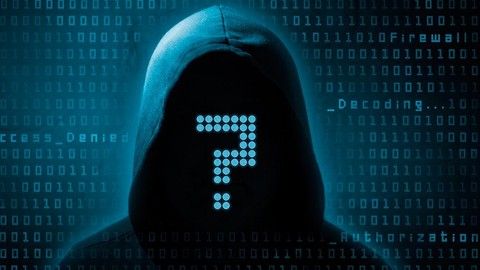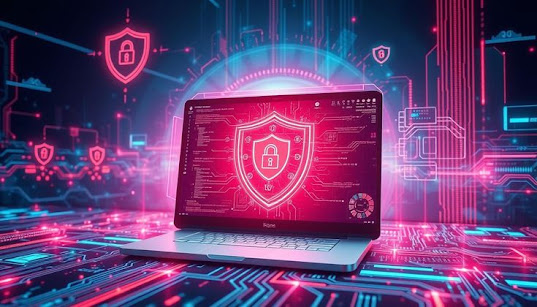Deepfake Defense: Combating AI-Generated Cyber Threats in 2025
Deepfake Defense: Combating AI-Generated Cyber Threats
Introduction
In 2025, artificial intelligence has reached astonishing capabilities, but with it comes an alarming rise in AI-generated threats, particularly deepfakes. Deepfakes are hyper-realistic fake audio, video, or images generated by AI that can be used to manipulate truth, impersonate individuals, and carry out cyberattacks with frightening realism. This blog post explores how deepfakes are created, why they pose a serious cybersecurity threat, and most importantly, how individuals and organizations can defend against them.
What Are Deepfakes?
Deepfakes are created using deep learning techniques like GANs (Generative Adversarial Networks). These algorithms can study thousands of real videos and mimic a person’s face and voice with high accuracy. What makes deepfakes so dangerous in 2025 is how accessible and convincing they've become.
Anyone with basic technical knowledge can now create deepfakes using free or low-cost tools. What used to take high-end computing is now achievable on a smartphone.
Types of Deepfake Cyber Threats
1. Phishing and Social Engineering
Attackers can impersonate a CEO or manager in a video message to trick employees into transferring funds or revealing confidential data.
2. Political Disinformation
Deepfakes are used to generate fake speeches or interviews, spreading false narratives during elections or international conflicts.
3. Personal Defamation
Individuals are targeted with deepfakes for harassment, blackmail, or reputation damage.
4. Fake Evidence and Legal Manipulation
Deepfakes can be fabricated as false video evidence in court cases, leading to serious legal implications.
5. Bypassing Biometric Security
Some deepfakes are designed to fool facial recognition systems, unlocking smartphones or breaching security checkpoints.
Why Are Deepfakes Hard to Detect?
AI-generated content is improving rapidly. In 2025, many deepfakes are nearly indistinguishable from real footage. These deepfakes often include:
- Synchronized lip movements
- Emotionally realistic expressions
- Consistent lighting and sound
Even trained professionals sometimes struggle to identify them without forensic tools.
How Deepfake Attacks Work in 2025
A typical attack might look like this:
- The attacker collects videos and audio of the target from social media.
- They use AI software to train a deepfake model.
- They produce a fake video (e.g., a CEO asking to transfer funds).
- The video is sent via email, messaging app, or even published online.
- The victim believes it's real and takes action—leading to financial or reputational damage.
It’s fast, cheap, and incredibly convincing.
Deepfake Detection Technologies
Thankfully, the cybersecurity community has responded with various tools and methods to detect deepfakes.
1. Deepfake Detection Software
Tools like Microsoft's Video Authenticator or Intel's FakeCatcher use subtle indicators—eye movement, lighting mismatches, and pixel inconsistencies.
2. Blockchain and Digital Watermarking
Authentic videos are now being embedded with invisible watermarks or verified timestamps.
3. AI-Powered Forensics
Advanced systems analyze audio, gestures, and facial micromovements to spot inconsistencies.
Detection tools must evolve as fast as the fakes do.
How to Protect Yourself and Your Organization
1. Educate Your Team
Host workshops and training programs to teach staff how to recognize fake content.
2. Use Multi-Factor Authentication
Never rely solely on video or voice commands. Always verify with 2FA or biometric checks.
3. Implement Content Verification
Use tools to check if the media you're watching is verified and watermarked.
4. Strengthen Legal Policies
Work with legal teams to define company responses to deepfake incidents.
5. Collaborate with Experts
Cybersecurity firms and ethical hackers can help test vulnerabilities and prepare your defenses.
Defense is a shared responsibility in the age of AI.
Government and Global Response
Nations are starting to recognize the risk of deepfakes to public trust and democracy. In 2025:
- Several countries have passed laws penalizing malicious deepfake creation.
- Social media platforms have content detection and labeling systems.
- Global organizations are forming coalitions to fight AI-based misinformation.
But legislation is still struggling to keep up with AI innovation.
The Future of Deepfake Technology
Looking ahead, deepfakes will become even more immersive—3D, real-time, and interactive. There’s no turning back. Instead, we must:
- Invest in AI tools that verify and detect content
- Strengthen digital literacy in society
- Build ethical AI frameworks and enforce accountability
The line between real and fake will only blur more. Our defense must sharpen.
Conclusion
Deepfakes in 2025 are not just a gimmick—they are a legitimate cyber threat with wide-reaching consequences. Whether you're an individual, a business, or a government agency, you must take steps to educate, detect, and defend against this evolving danger. The good news is that we have the technology and the knowledge to do it—if we act swiftly, smartly, and together.
Stay aware. Stay informed. Stay secure.





Comments
Post a Comment